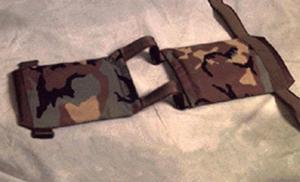World Military Encyclopedia
> United States
> Ballistic Protection
> Bulletproof Vests
> US-AV-00007

ISAPO plate carrier (Interim Small Arms Protective Overvest)
Casual:

Maneuver Support Center of Excellence (Fort Leonard Wood) Patch. Alpha Unit. US Army

354th radio navigation Patch of the Air Force of the Republic of Belarus

Кокарда эмблема на фуражку офицеров ВМС Франции
To change information
Other versions
Overview:
Weight:
-16.5lbs (7.4kg) (carrier and plates)
-25.5lbs. (11.5kg) (carrier with plates paired with standard PASGT combat vest)
Ballistic Coverage: lungs and heart region
NIJ Level: IV (4) ( 168grain 7.62x63/30.06 AP (M2) )
Designed: mid 1990´s
Used: approved in March 1996 phased out in 2003
Accessory(s): PASGT system combat vest
Variant(s): none
Cost Per Unit: $330 USD
Technical Description:
The ISAPO or Interim Small Arms Protective Overvest is a simple pullover plate carrier designed to be worn over the PASGT combat vest. The first versions of the ISAPO carrier were made of a spongy stretchy material similar to a bungee or hair tie while. Later on, production moved to a thicker heavier nylon like the PASGT vest cover. The carrier contains two identical front and back plates made of ceramic the plates are rated at NIJ level IV (4) this rating denotes that it can stop a minimum of one 7.62x63 (30.06) armor piecing round. Like most homogenous hard armor the plate is made just large enough to cover the wearers lungs and heart from a head on shot. The cover is available in U.S. woodland/M81/BDU, six color DBDU, and tri-color DBDU/DCU similar to the PASGT vest itself.
History:
ISAPO plate carrier was born out of a need for better protection against rifle threats like 7.62x39, 5.56x45, and 7.62x51. While the DoD was in the process of procuring a vest built for this purpose, it would be a while until they would actually be ready to be issued and put into mass production but better armor was needed as soon as possible. In the field the ISAPO plate carrier did protect its wearer, however, due to its weight (16lbs.) it wasn't all that popular among the rank and file, together with the PASGT combat vest it weighed upward of 24 lbs. at the time where not many nations had deployed heavier plate carries or hard plates and soldiers where not trained with them so a 24lbs. armor setup must have been a bit of a surprise.
Weight:
-16.5lbs (7.4kg) (carrier and plates)
-25.5lbs. (11.5kg) (carrier with plates paired with standard PASGT combat vest)
Ballistic Coverage: lungs and heart region
NIJ Level: IV (4) ( 168grain 7.62x63/30.06 AP (M2) )
Designed: mid 1990´s
Used: approved in March 1996 phased out in 2003
Accessory(s): PASGT system combat vest
Variant(s): none
Cost Per Unit: $330 USD
Technical Description:
The ISAPO or Interim Small Arms Protective Overvest is a simple pullover plate carrier designed to be worn over the PASGT combat vest. The first versions of the ISAPO carrier were made of a spongy stretchy material similar to a bungee or hair tie while. Later on, production moved to a thicker heavier nylon like the PASGT vest cover. The carrier contains two identical front and back plates made of ceramic the plates are rated at NIJ level IV (4) this rating denotes that it can stop a minimum of one 7.62x63 (30.06) armor piecing round. Like most homogenous hard armor the plate is made just large enough to cover the wearers lungs and heart from a head on shot. The cover is available in U.S. woodland/M81/BDU, six color DBDU, and tri-color DBDU/DCU similar to the PASGT vest itself.
History:
ISAPO plate carrier was born out of a need for better protection against rifle threats like 7.62x39, 5.56x45, and 7.62x51. While the DoD was in the process of procuring a vest built for this purpose, it would be a while until they would actually be ready to be issued and put into mass production but better armor was needed as soon as possible. In the field the ISAPO plate carrier did protect its wearer, however, due to its weight (16lbs.) it wasn't all that popular among the rank and file, together with the PASGT combat vest it weighed upward of 24 lbs. at the time where not many nations had deployed heavier plate carries or hard plates and soldiers where not trained with them so a 24lbs. armor setup must have been a bit of a surprise.
Another category of: Bulletproof Vests
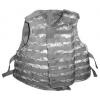 IBA (Interceptor Multi-Threat Body Armor System )
IBA (Interceptor Multi-Threat Body Armor System )
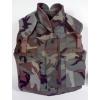 PASGT system combat vest (manufactured by Gibraltar Industries)
PASGT system combat vest (manufactured by Gibraltar Industries)
 Eagle Industries CIRAS land
Eagle Industries CIRAS land
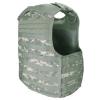 Condor ACU Quick Release Plate Carrier. US Armed Forces
Condor ACU Quick Release Plate Carrier. US Armed Forces
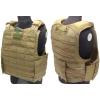 Eagle Industries CIRAS maritime
Eagle Industries CIRAS maritime

